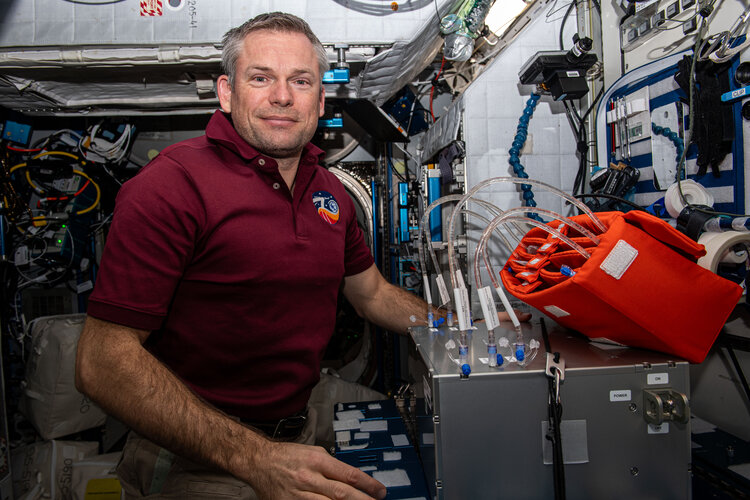Mimicking nature’s work

Built into a suitcase-sized container, the Aquamembrane experiment consists of several pumps that draw out water from three wastewater bags on the Space Station through a membrane. The membrane will filter out contaminants and leave behind the clean water. Pumps then transport the clean water from the membrane to three water bags, that will be sent down to Earth to test the purity of the water.
The membrane, called Aquaporin Hollow Fiber Forward Osmosis or HFFO in short, is made by small proteins, called aquaporins, that exist in nature, for example in plants and in kidneys. The proteins allow only water to pass through the membrane, while keeping ions and salts out, mimicking the natural way of filtering water in the human body
The membrane excels on energy efficiency using only half a dozen 9V batteries, like the ones in fire alarms, to drive the water past the membrane, which makes it ideal for both space, especially future missions to the Moon and beyond, and other areas where clean water and energy is not available.



